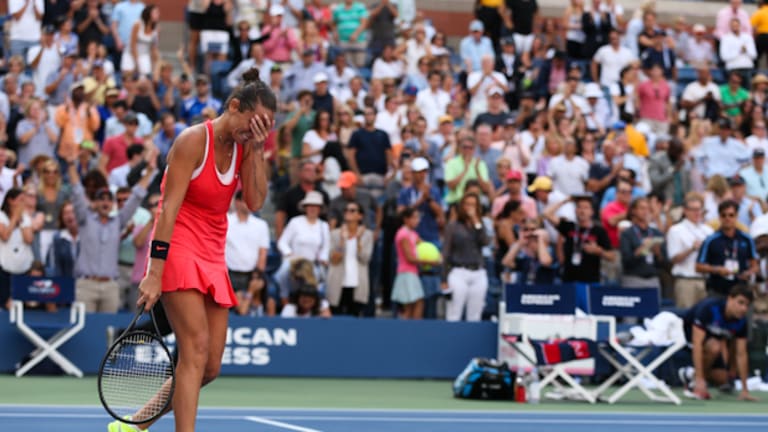NEW YORK—A few minutes after Roberta Vinci beat Serena Williams 2-6, 6-4, 6-4 in the U.S. Open semifinals on Friday, she was asked if she had believed, when she woke up that morning, whether she had any chance of winning. Vinci didn’t hesitate with her answer.
“No!” the Italian cried as she wiggled her head back and forth.
How about after she had pushed Serena to a third set?
“Never,” Vinci said with a laugh.
What about when she broke Serena at 3-3 in the third and served for the match at 5-4?
“When I serve,” said Vinci, while pretending to shake all over, “I think, ‘It’simpossible.’”
On Thursday night, the world No. 43 had even gone so far as to call her travel agent and say, “‘OK, book me a flight, because, you know...”
So how did, at age 32 and playing in her first Grand Slam semifinal, did the 132-pound Vinci pull off what may have been the biggest upset in tennis history? How did she win a match in which she was a 300-1 underdog?
